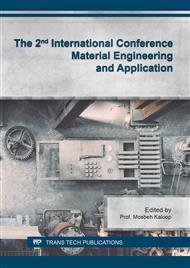p.47
p.53
p.61
p.71
p.77
p.84
p.89
p.94
p.100
Design Study of Trapezoid-Shaped Magnetic Flux Concentrator for Axial Amplification Characteristics
Abstract:
In this paper, the axial magnetic field amplification characteristics of the trapezoid-shaped magnetic flux concentrator at micrometer scale are studied. The factors of the dimension parameters including the ratio of the outer and inner width, the aspect ratio, the air gap, as well as the material property including the relative permeability influencing on the magnetic gain are analyzed using the finite element method. It indicates that the concentrator with air gap shows obvious magnetic amplification. The concentrator shows intensive magnetic gain with the increasing ratio of the outer and inner width, aspect ratio and the decreasing air gap. When the dimension parameters of the length, the outer width, the inner width, and the air gap are of 1000um, 200um, 10um, and 5um respectively, the magnetic gain of 65 is obtained. Additionally, the magnetic gain increases with the relative permeability of the concentrator. When the relative permeability reaches a certain value, the magnetic gain tends to saturation. The magnetic flux concentrator has a linear working range of 12.8mT. The study can provide a theoretical reference for the design and application of the trapezoid-shaped magnetic flux concentrator.
Info:
Periodical:
Pages:
77-83
Citation:
Online since:
January 2018
Authors:
Price:
Сopyright:
© 2018 Trans Tech Publications Ltd. All Rights Reserved
Share:
Citation:


